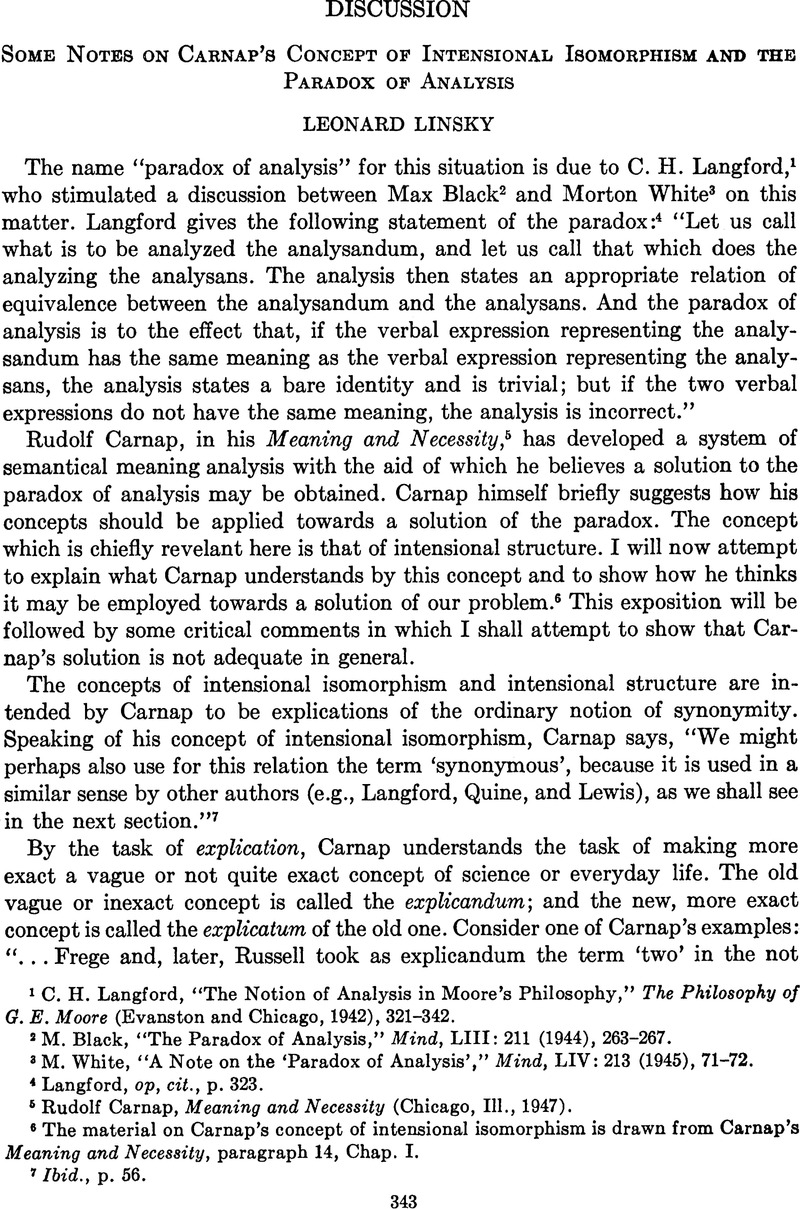Article contents
Some Notes on Carnap's Concept of Intensional Isomorphism and the Paradox of Analysis
Published online by Cambridge University Press: 14 March 2022
Abstract

- Type
- Discussion
- Information
- Copyright
- Copyright © The Philosophy of Science Association 1949
References
Notes
1 C. H. Langford, “The Notion of Analysis in Moore's Philosophy,” The Philosophy of G. E. Moore (Evanston and Chicago, 1942), 321–342.
2 M. Black, “The Paradox of Analysis,” Mind, LIII: 211 (1944), 263–267.
3 M. White, “A Note on the ‘Paradox of Analysis’,” Mind, LIV: 213 (1945), 71–72.
4 Langford, op, cit., p. 323.
5 Rudolf Carnap, Meaning and Necessity (Chicago, Ill., 1947).
6 The material on Carnap's concept of intensional isomorphism is drawn from Carnap's Meaning and Necessity, paragraph 14, Chap. I.
7 Ibid., p. 56.
8 Ibid., p. 8.
9 Ibid., p. 8.
10 Ibid., p. 56.
11 Ibid., p. 56.
12 Ibid., p. 58.
13 Ibid., pp. 63–64.
14 Ibid., p. 63.
15 Ibid., p. 57.
16 Ibid., p. 57.
17 Ibid., pp. 57–58.
18 Ibid., p. 58.
19 This argument was suggested to me in conversation with Dr. Benson Mates of the University of California, Berkeley.
- 5
- Cited by




